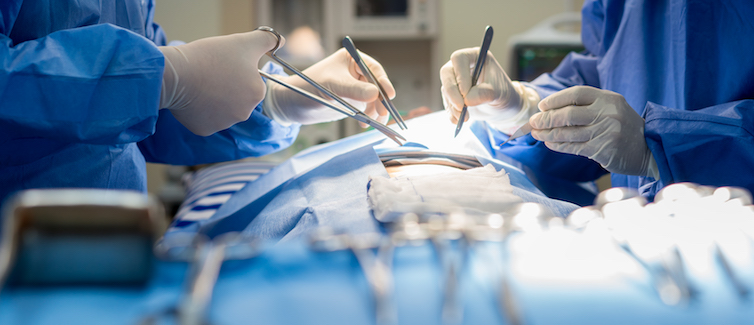UPMC’s world-class cardiologists, cardiac surgeons, nurses, and technologists are available around the clock to treat emergency heart conditions, such as heart attacks. Some team members are even required to live near their respective hospitals because when duty calls, they must arrive within 30 minutes.
When patients suffer heart attacks, time is of the essence to ensure their survival and quality of life.
Never Miss a Beat!
Subscribe to Our HealthBeat Newsletter!
Thank you for subscribing!
You can now select the specific newsletters you'd like to receive.
You are already subscribed.
Subscribe to more newsletters in our email preference center.
Sorry, an error occurred. Please try again later.
Get Healthy Tips Sent to Your Phone!
A Patient’s Perspective
At age 40, Pittsburgh native Mike Zdinak received a lifesaving emergency angioplasty at UPMC after a heart attack caused him to collapse inside a mall. A police officer who responded to the 911 call worked with others at the scene to administer CPR and deliver shocks from an automated external defibrillator.
Within minutes, the local Emergency Medical Service (EMS) team arrived and performed an electrocardiogram, which confirmed Mike was experiencing sudden cardiac arrest. Paramedics continued giving lifesaving shocks and fluids in the ambulance during the ride to the hospital, where the Emergency Department (ED) and cardiac catheterization team were ready and waiting.
After Mike was stabilized in the ED, he was moved to the catheterization lab (typically referred to as the cath lab). That’s where a balloon was inflated inside Mike’s blocked artery to restore blood flow to his heart. The time it took to start the procedure after Mike’s arrival at the hospital…a mere 65 minutes.
“When you’re having a heart attack, time is muscle,” says Christopher Wentz, MD, an interventional cardiologist who performed Mike’s angioplasty. “Quick intervention increases your chance of survival and minimizes damage to the heart.”
Mike survived blockages to two main arteries, including his left anterior descending artery, known as “the widowmaker” because blockages there are often fatal. Following his procedure, the father-of-three stayed in UPMC’s cardiothoracic intensive care unit for about a month before spending 10 days in inpatient rehabilitation.
Mike then returned to work as a special education teacher. He says he’ll always be thankful for the treatment he received.
“They saved my life — that combination of first responders, emergency staff, the cath lab team, and follow-up care. I really shouldn’t be here. The fact that I’m talking now says how amazing my care was.”
Symptoms of a Heart Attack
While most heart attacks start slowly with mild pain or discomfort, some are sudden and intense. Subtle signs that are often overlooked include shortness of breath or a feeling of indigestion or upset stomach. Watch out for these warning signs:
- Chest pain or discomfort, including uncomfortable pressure, squeezing, or fullness
- Pain or discomfort in one or both arms, the back, neck, jaw, or stomach
- Shortness of breath, breaking out in a cold sweat, nausea, weakness, or lightheadedness
Advanced Cardiovascular Care
UPMC hospitals average a 68-minute “door-to-balloon” time compared to the 90-minute national guideline for hospitals. Their tertiary care centers are fully equipped to handle emergency cardiac interventions and complex open heart surgeries, such as valve replacements and coronary bypasses.
About Heart and Vascular Institute
The UPMC Heart and Vascular Institute has long been a leader in cardiovascular care, with a rich history in clinical research and innovation. As one of the first heart transplant centers in the country and as the developer of one of the first heart-assist devices, UPMC has contributed to advancing the field of cardiovascular medicine. We strive to provide the most advanced, cutting-edge care for our patients, treating both common and complex conditions. We also offer services that seek to improve the health of our communities, including heart screenings, free clinics, and heart health education. Find an expert near you.
